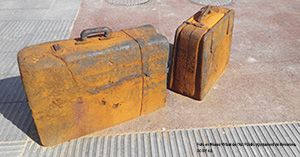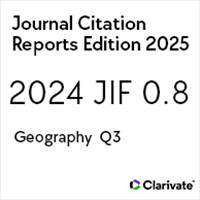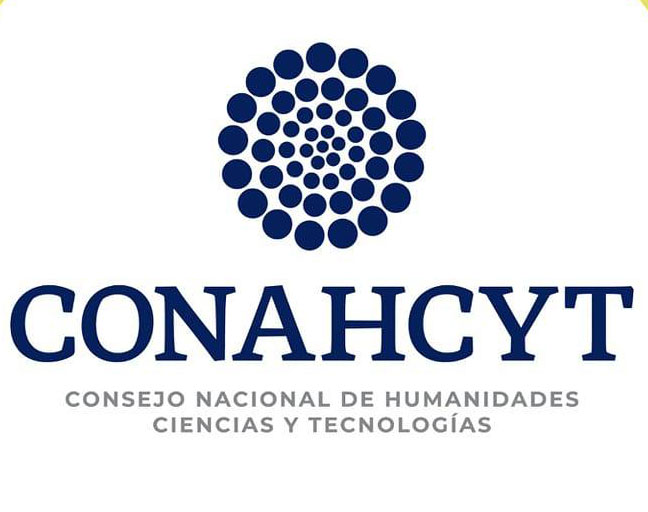En las fronteras de la autoctonía. Migrantes internos e internacionales en Barcelona (España)
Autochthony boundaries. Internal and international migrants in Barcelona (Spain)
https://doi.org/10.21670/ref.2502160
Palabras clave:
migrantizar, fronterizar, migración interna, migración internacionalResumen
Este artículo explora las posibilidades heurísticas de tratar conjuntamente las migraciones internas e internacionales, algo descuidado por los estudios migratorios que han tendido a analizarlas por separado. Centrado en el caso de Barcelona desde 1960 hasta 2020, el estudio conjuga el análisis de fuentes secundarias y los trabajos de campo etnográfico realizados por los autores en dos barrios de la ciudad. Se muestra cómo ambos tipos de movilidades han sido “migrantizadas”, es decir, sujetas a una condición social distintiva que remite a los procesos de subalterización a los que estos grupos han sido sometidos en las sociedades de residencia. Si bien la generalización de los resultados a otros casos requiere mayor investigación, se aportan evidencias sólidas del carácter contingente de la categoría inmigrante y las posibilidades analíticas de explorar los procesos de fronterización —construcción, deconstrucción y reconstrucción de fronteras (boundaries)— que se generan en torno a la movilidad de poblaciones.Abstract This article explores the heuristic possibilities of jointly addressing internal and international migrations, an aspect often neglected by migration studies which have tended to analyze them separately. Focused on the case of Barcelona between 1960 and 2020, the study combines the analysis of secondary sources and ethnographic fieldwork conducted by the authors in two neighborhoods of the city. It shows how both types of mobility have been “migrantized”, that is, subjected to a distinctive social condition that refers to the processes of subalternization to which these groups have been subjected in their societies of residence. While the scope of generalization of the results to other cases requires further research, solid evidence is provided of the contingent nature of the immigrant category and the analytical possibilities of exploring the processes of boundary-making —construction, deconstruction, and reconstruction of boundaries— related to human mobility.
Citas
Ajuntament de Barcelona. (2024). Anuari estadístic de la ciutat de Barcelona 2023. https://bcnroc.ajuntament.barcelona.cat/jspui/bitstream/11703/138609/1/Anuari2023.pdf
Alba, R. & Nee, V. (2003). Remaking the American mainstream. Assimilation and contemporary immigration. Harvard University Press.
Albeda, Y., Tersteeg, A., Oosterlynck, S. & Verscharaegen, G. (2017). Symbolic boundary making in super-diverse deprived neighbourhoods. Tijdschrift voor Economische en Sociale Geografie, 109(4), 470-484. https://doi.org/10.1111/tesg.12297 DOI: https://doi.org/10.1111/tesg.12297
Anderson, B. (2006). Comunidades imaginadas. Reflexiones sobre el origen y la difusión del nacionalismo (3a. reimpr.). FCE.
Anderson, B. (2019). New directions in migration studies: towards methodological de-nationalism. Comparative Migration Studies 7, Artículo 36. https://doi.org/10.1186/s40878-019-0140-8 DOI: https://doi.org/10.1186/s40878-019-0140-8
Anzaldúa, G. (2016). Borderlands/La Frontera. La nueva mestiza. Capitán Swing. (Trabajo original publicado en 1986) DOI: https://doi.org/10.1515/9780773551886-027
Aramburu, M. (2020). The unmaking and remaking of an ethnic boundary. Working-class Castilian speakers in Catalonia and the paradoxes of the independence movement. Journal of Ethnic and Migration Studies, 46(11), 2387-2406. https://doi.org/10.1080/1369183X.2018.1543019 DOI: https://doi.org/10.1080/1369183X.2018.1543019
Aramburu Otazu, M. (2002). Los otros y nosotros. Imágenes del inmigrante en Ciutat Vella de Barcelona. Ministerio de Educación, Cultura y Deporte.
Ayuntamiento de Barcelona. (2002). Plan municipal de inmigración. http://hdl.handle.net/11703/110797
Bakić-Hayden, M. (1995, invierno). Nesting orientalisms: the case of former Yugoslavia. Slavic Review, 54(4), 917-931. https://www.jstor.org/stable/2501399 DOI: https://doi.org/10.2307/2501399
Barrera, A. (1985). La dialéctica de la identidad en Cataluña. Un estudio de antropología social. Centro de Investigaciones Sociológicas.
Barth, F. (1969). Ethnic groups and boundaries. The social organization of cultural difference. Universitetsforlaget.
Bialas, U., Lukate, J. M. & Vertovec, S. (2024). Contested categories in the context of international migration: introduction to the special issue. Ethnic and Racial Studies. https://doi.org/10.1080/01419870.2024.2404493 DOI: https://doi.org/10.1080/01419870.2024.2404493
Boj Labiós, I. & Vallès Aroca, J. (2005). El Pavelló de les Missions. La repressió de la immigració. L’Avenç, (298), 38-44.
Candel, F. (1964). Els altres catalans. Edicions 62.
Capel Saez, H. (1967). Los estudios acerca de las migraciones interiores en España. Revista de Geografía, 1(1), 77-101. https://raco.cat/index.php/RevistaGeografia/article/view/50269
Capussotti, E. (2010). Nordisti contro Sudisti: internal migration and racismo in Turin, Italy: 1950s and 1960s. Italian Culture, 28(2), 121-138. https://doi.org/10.1179/016146210X12790095563101 DOI: https://doi.org/10.1179/016146210X12790095563101
Castellanos Guerrero, A. (Coord.). (2003). Imágenes del racismo en México. Universidad Autónoma Metropolitana / Plaza y Valdés.
Cea D’Ancona, M. Á. (2002). La medición de las actitudes ante la inmigración. Evaluación de los indicadores tradicionales de “racismo”. Reis: Revista Española de Investigaciones Sociológicas, (99), 87-11. https://doi.org/10.5477/cis/reis.99.87 DOI: https://doi.org/10.2307/40184401
Chovancova, L. (2017). ¿Qué investigar para poder investigar? Una explicación “materialista” del interés de la antropología española por las migraciones. En T. Vicente Rabanaque, M. J. García Hernandorena & T. Vizcaino Estevan (Eds.), Antropologías en transformación: sentidos, compromisos y utopías (pp. 2194-2201). Universitat de Valencia. https://congresoantropologiavalencia.com/wp-content/uploads/2017/09/XIV-Congreso-Antropologia-PRE-PRINT.pdf
Clua i Fainé, M. (2011). Catalanes, inmigrantes y charnegos: “raza”, “cultura” y “mezcla” en el discurso nacionalista catalán. Revista de Antropología Social, 20, 55-75. https://doi.org/10.5209/rev_RASO.2011.v20.36262 DOI: https://doi.org/10.5209/rev_RASO.2011.v20.36262
Comas d’Argemir, D. & Pujadas Muñoz, J. J. (1991). Familias migrantes: reproducción de la identidad y del sentimiento de pertenencia. Papers, 36, 33-56. https://doi.org/10.5565/rev/papers/v36n0.1586 DOI: https://doi.org/10.5565/rev/papers/v36n0.1586
Dahinden, J. (2016). A plea for the ‘de-migranticization’ of research on migration and integration. Ethnic and Racial Studies, 39(13), 2207-2225. https://doi.org/10.1080/01419870.2015.1124129 DOI: https://doi.org/10.1080/01419870.2015.1124129
De Genova, N., Garelli, G. & Tazzioli, M. (2018, abril). Autonomy of asylum? The autonomy of migration. Undoing the refugee crisis script. South Atlantic Quarterly, 117(2), 239-265. https://doi.org/10.1215/00382876-4374823 DOI: https://doi.org/10.1215/00382876-4374823
Delgado Ruiz, M. (2003). ¿Quién puede ser ‘inmigrante’ en la ciudad? Mugak, 18, 9-24.
Díaz Sánchez, M. (2020). Migrar contra el poder. La represión de las migraciones interiores en España durante la posguerra (1939-1957) [Tesis doctoral, Universidad Autónoma de Barcelona]. TDX. http://hdl.handle.net/10803/670482
DiGiacomo, S. M. (1985). The politics of identity: nationalism in Catalonia [Tesis doctoral, University of Massachusetts]. ProQuest. https://www.proquest.com/openview/64fe058c3465c87ca9dc0447f7d6244b/1?pq-origsite=gscholar&cbl=18750&diss=y
Domingo, A., Pinyol-Jiménez, G. & Bayona-i-Carrasco, J. (2023). La diversidad de orígenes entre lo urbano y lo rural: discurso, políticas y análisis demoespacial en España. Migraciones, (59), 1-25. https://doi.org/10.14422/mig.2023.023 DOI: https://doi.org/10.14422/mig.2023.023
Eriksen, T. H. (2007). Complexity in social and cultural integration: some analytical dimensions. Ethnic and Racial Studies, 30(6), 1055-1069. https://doi.org/10.1080/01419870701599481 DOI: https://doi.org/10.1080/01419870701599481
Esteva Fabregat, C. (1973). Aculturación y urbanización de inmigrados en Barcelona. Ethnica, Revista de Antropología, (5), 135-189.
Fauser, M. (2024). Mapping the internal border through the city: an introduction. Ethnic and Racial Studies, 47(12), 2477-2498. https://doi.org/10.1080/01419870.2024.2344693 DOI: https://doi.org/10.1080/01419870.2024.2344693
Fernández Soldevilla, G. & López Romo, R. (2010). ¿Enemigos internos o nuevos aliados? Los inmigrantes y el nacionalismo vasco radical (1959-1979). Alcores, (10), 193-217. https://doi.org/10.69791/rahc.183 DOI: https://doi.org/10.69791/rahc.183
Fishman, S. (1996). Colonizing your own people: German unification and the role of education. The Educational Forum, 60(1), 24-31. DOI: https://doi.org/10.1080/00131729509335087
Fontes, P. (2008). Um nordeste en São Paulo. Trabalhadores migrantes em São Miguel Paulista (1945-1966). Editora FGV.
Guerra Garrido, R. (1969). Cacereño. Alfaguara.
Izaola, A. & Zubero, I. (2015). La cuestión del otro: forasteros, extranjeros, extraños y monstruos. Papers, 100(1), 105-129. http://dx.doi.org/10.5565/rev/papers.649 DOI: https://doi.org/10.5565/rev/papers.649
Johnson, L. (2017). Bordering Shanghai: China’s hukou system and processes of urban bordering. Geoforum, 80, 93-102. https://doi.org/10.1016/j.geoforum.2017.01.005 DOI: https://doi.org/10.1016/j.geoforum.2017.01.005
Kalir, B. (2013). Moving subjects, stagnant paradigms. can the ‘mobilities paradigm’ transcend methodological nationalism? Journal of Ethnic and Migration Studies, 39(2), 311-327. https://doi.org/10.1080/1369183X.2013.723260 DOI: https://doi.org/10.1080/1369183X.2013.723260
King, R. & Skeldon, R. (2010). ‘Mind the Gap!’ Integrating approaches to internal and international migration. Journal of Ethnic and Migration Studies, 36(10), 1619-1646. https://doi.org/10.1080/1369183X.2010.489380 DOI: https://doi.org/10.1080/1369183X.2010.489380
Lamont, M. & Mizrachi, N. (2012). Ordinary people doing extraordinary things: responses to stigmatization in comparative perspective. Ethnic and Racial Studies, 35(3), 365-381. https://doi.org/10.1080/01419870.2011.589528 DOI: https://doi.org/10.1080/01419870.2011.589528
Lapeyronnie, D. (2008). Ghetto urbain. Ségrégation, violence, pauvrete en France aujourd’hui. Robert Laffont.
López, H. (2019, 5 de abril). ¿Per què parlar de cultura xarnega? El Periódico. https://www.elperiodico.cat/ca/societat/20190405/per-que-parlar-de-cultura-xarnega-el-2019-7391827
Mackenzie, P. W. (2002). Strangers in the city: the hukou and urban citizenship in China. Journal of International Affairs, 56(1), 305-319. https://www.jstor.org/stable/24357894
Marín Corbera, M. (2015). Migrantes, fronteras y fascismos. El control de los desplazamientos por parte del régimen franquista 1939-1965. Spagna Contemporánea, (47), 79-94. https://www.spagnacontemporanea.it/index.php/spacon/article/view/178
Martín Díaz, E. (1990). Las asociaciones andaluzas en Catalunya y su función de reproducción de la identidad cultural. En J. Cucó & J. J. Pujadas (Coords.), Identidades colectivas. Etnicidad y sociabilidad en la Península Ibérica (pp. 255-284). Generalitat Valenciana.
Martín Díaz, E. (2023). Alcances y limitaciones de la teoría marxista para el estudio de los procesos migratorios: Hacia una teoría antropológica de las migraciones. RESED, 1(11), 33-57. https://doi.org/10.25267/Rev_estud_socioeducativos.2023.i11.04 DOI: https://doi.org/10.25267/Rev_estud_socioeducativos.2023.i11.04
Martínez Aranda, M. A. (2020). De migraciones y chabolas: políticas de control y resistencias cotidianas en los suburbios madrileños durante la Dictadura franquista. Experiencias de vecinas en Vallecas [Tesis doctoral, Universidad Autónoma de Madrid]. Biblos-e Archivo. http://hdl.handle.net/10486/696046
Mata Codesal, D. (2016). ¿Es deseable desmigrantizar nuestras investigaciones? Ankulegi, (20), 47-60. https://dialnet.unirioja.es/servlet/articulo?codigo=6051876
Mata Codesal, D. (2018). El discurso sobre la gestión intercultural de la diversidad en Barcelona. Disparidades. Revista de Antropología, 73(2), 387-406. https://doi.org/10.3989/rdtp.2018.02.006 DOI: https://doi.org/10.3989/rdtp.2018.02.006
Mata-Codesal, D. (2020a). Anti-social behavior in the square. Differentiation mechanisms among non-native groups in a peripheral neighbourhood of Barcelona. Ethnic and Racial Studies, 43(4), 768-786. https://doi.org/10.1080/01419870.2019.1599131 DOI: https://doi.org/10.1080/01419870.2019.1599131
Mata Codesal, D. (2020b). Luchas por el control de lo escaso en un barrio de Barcelona. En M. Aramburu Otazu & S. Bofill-Poch (Eds.), Crisis y sentidos de injusticia. Tensiones conceptuales y aproximaciones etnográficas (pp. 193-205). Edicions Universitat Barcelona.
Mavroudi, E. & Nagel, C. (2016). Global migration. Patterns, processes, and politics. Routledge. DOI: https://doi.org/10.4324/9781315623399
Medina, F. X. (2002). Vascos en Barcelona. Etnicidad y migración vasca hacia Cataluña en el siglo xx (Colección Urazandi Bilduma, 5). Servicio Central de Publicaciones del Gobierno Vasco. https://www.euskadi.eus/gobierno-vasco/-/libro/vascos-en-barcelona-etnicidad-y-migracion-vasca-hacia-cataluna-en-el-siglo-xx/
Miró, C. A. & Potter, J. E. (1986, 14-24 de julio). Migración interna e internacional (Documento 3 del Taller Regional de Capacitación Celade, San José Costa Rica). https://repositorio.cepal.org/entities/publication/1f4cb7e8-7a29-48df-bac4-53dc98558407
Nestorowicz, J. & Anacka, M. (2019). Mind the gap? Quantifying interlinkages between two traditions in migration literature. International Migration Review, 53(1), 283-307. https://doi.org/10.1177/0197918318768557 DOI: https://doi.org/10.1177/0197918318768557
O’Brien, T., Creţan, R., Jucu, I. S. & Covaci, R. N. (2023). Internal migration and stigmatization in the rural Banat region of Romania, Identities, 30(5), 704-724. https://doi.org/10.1080/1070289X.2022.2109276 DOI: https://doi.org/10.1080/1070289X.2022.2109276
Ofer, I. (2017). Mobility of ‘the defeated’: internal migration and social advancement in a post-civil war society. Mobilities, 12(3), 479-491. https://doi.org/10.1080/17450101.2016.1208413 DOI: https://doi.org/10.1080/17450101.2016.1208413
Pujol, J. (1976). La immigració. Problema i esperança de Catalunya. Nova Terra.
Raghuram, P., Breines, M. R. & Gunter, A. (2024). De-migranticizing as methodology. Rethinking migration studies through immobility and liminality. Comparative Migration Studies, 12, Artículo 24, 1-20. https://doi.org/10.1186/s40878-024-00382-3 DOI: https://doi.org/10.1186/s40878-024-00382-3
Ravenstein, E. G. (1885, junio). The laws of migration. Journal of the Statistical Society of London, 48(2), 167-235. https://doi.org/10.2307/2979181 DOI: https://doi.org/10.2307/2979181
Rivera, L. (2017). De la migración interna a la migración internacional en México. Apuntes sobre la formación de un campo de estudio. Íconos, (58), 37-57. https://iconos.flacsoandes.edu.ec/index.php/iconos/article/view/2500 DOI: https://doi.org/10.17141/iconos.58.2017.2500
Ruiz Balzola, A. (2016). El fenómeno migratorio en el discurso soberanista vasco. Grand Place, Pensamiento y Cultura, (6), 11-21. https://marioonaindiafundazioa.org/wp-content/uploads/2021/06/GRAND-PLACE-6.pdf
Scholten, P., Pisarevskaya, A. & Levy, N. (2022). An introduction to migration studies: the rise and coming of age of a research field. En P. Scholten (Ed.), Introduction to migration studies. An interactive guide to the literatures on migration and diversity (pp. 3-24). Springer. https://doi.org/10.1007/978-3-030-92377-8_1 DOI: https://doi.org/10.1007/978-3-030-92377-8_1
Sheller, M. & Urry, J. (2006). The new mobilities paradigm. Environment and Planning A: Economy and Space, 38(2), 207-226. https://doi.org/10.1068/a37268 DOI: https://doi.org/10.1068/a37268
Simmel, G. (2012). El extranjero. Sociología del extraño. Sequitur.
Solé, C. (1982). Los inmigrantes en la sociedad y en la cultura catalanas. Ediciones Península.
Tatjer, M. & Larrea, C. (Eds.). (2010). Barracas. La Barcelona informal del siglo XX. Instituto de Cultura del Ayuntamiento de Barcelona. https://www.barcelona.cat/museuhistoria/es/formats/posits/barracas-la-barcelona-informal-del-siglo-xx
Van Houtum, H. & Van Naerssen, T. (2002). Bordering, ordering and othering. Tijdschrift voor economische en sociale geografie, 93(2), 125-136. https://doi.org/10.1111/1467-9663.00189 DOI: https://doi.org/10.1111/1467-9663.00189
Vasallo, B. (2018, 12 de febrero). Allò popular, allò divers, allò ‘charnego’. Crític. https://www.elcritic.cat/opinio/brigitte-vasallo/allo-popular-allo-divers-allo-charnego-13187
Vasallo, B. (2021). Lenguaje inclusivo y exclusión de clase. Larousse.
Vertovec, S. (2007). Super-diversity and its implications. Ethnic and Racial Studies, 30(6), 1024-1054. https://doi.org/10.1080/01419870701599465 DOI: https://doi.org/10.1080/01419870701599465
Wacquant, L. (2007). Territorial stigmatization in the age of advanced marginality. Thesis Eleven, 91(1), 66-77. https://doi.org/10.1177/0725513607082003 DOI: https://doi.org/10.1177/0725513607082003
Wessendorf, S. (2019, septiembre). Ethnic minorities’ reactions to newcomers in East London: symbolic boundaries and convivial labour. III Working Paper, (35), 1-24. http://eprints.lse.ac.uk/id/eprint/101879
Wimmer, A. (2008). Elementary strategies of ethnic boundary making. Ethnic and Racial Studies, 31(6), 1025-1055. https://doi.org/10.1080/01419870801905612 DOI: https://doi.org/10.1080/01419870801905612
Wimmer, A. & Glick Schiller, N. (2003). Methodological nationalism, the social sciences, and the study of migration: an essay in historical epistemology. International Migration Review, 37(3), 576-610. https://doi.org/10.1111/j.1747-7379.2003.tb00151.x DOI: https://doi.org/10.1111/j.1747-7379.2003.tb00151.x
Wise, A. & Velayutham, S. (2014). Conviviality in everyday multiculturalism: some brief comparisons between Singapore and Sydney. European Journal of Cultural Studies, 17(4), 406-430. https://doi.org/10.1177/1367549413510419 DOI: https://doi.org/10.1177/1367549413510419
Wyss, A. & Dahinden, J. (2022). Disentangling entangled mobilities: reflections on forms of knowledge production within migration studies. Comparative Migration Studies, 10, Article 33. https://doi.org/10.1186/s40878-022-00309-w DOI: https://doi.org/10.1186/s40878-022-00309-w
Yuval-Davis, N., Wemyss, G. & Cassidy, K. (2019). Bordering. Polity Press.
































